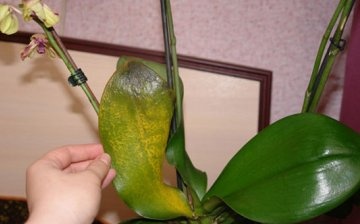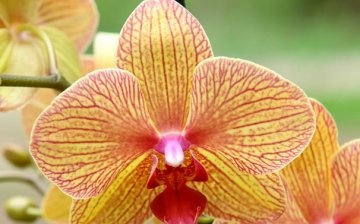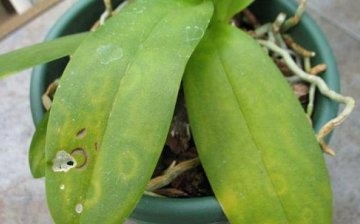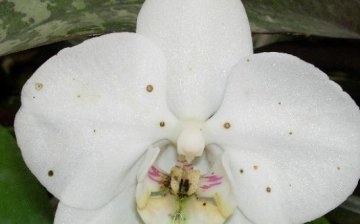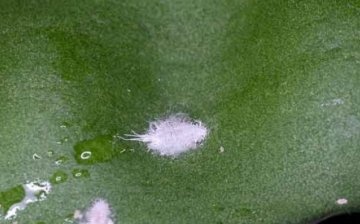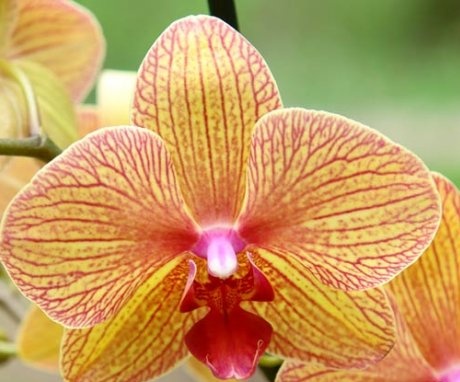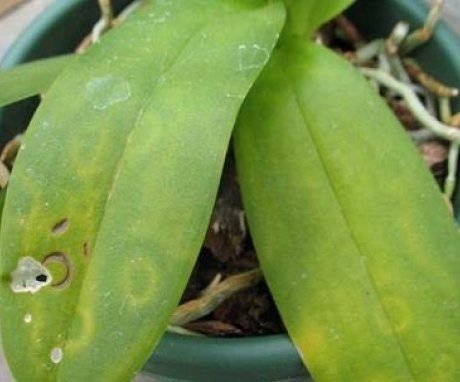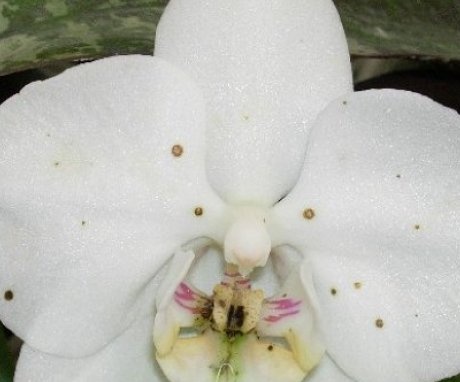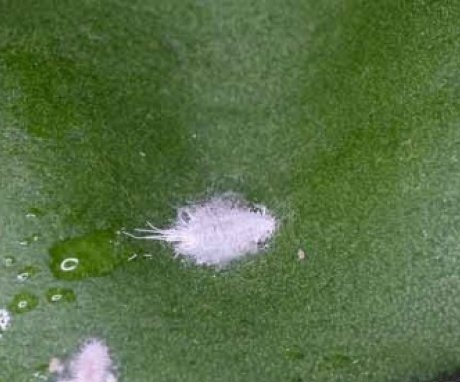The most common diseases and pests of orchids
Orchid - a tropical flower, however, it is quite possible to grow such an outlandish specimen at home. The main task is to correctly determine the type of orchid that can survive at home.
The easiest orchid to care for belongs to the Phalaenopsis variety. It is with her that it is best to start acquaintance with this exotic flower. Phalaenopsis grows year-round, and flowering occurs twice a year. However, it is important to understand that the orchid often suffers from various diseases, therefore, in any case, the flower will need careful care and attention.
Content:
- Tips for choosing and caring for an orchid
- The consequences of improper care
- The most common orchid diseases
- Common pests affecting orchids
Tips for choosing and caring for an orchid
In order to orchid pleased the owner with her flowering, you need to know how to choose a healthy plant to buy:
- The leaves should be rich in color, bright and juicy.
- The color can range from green to reddish. But in any case, there should be no brown spots, dry, withered areas and any plaque on the foliage.
- Root system should be firm with a white-green tint.
After purchase, the plant requires acclimatization in a new place. It is necessary to create the most comfortable conditions for him. The orchid requires diffused light. The plant can be placed on a windowsill, but it is important to ensure that the scorching rays of the sun do not fall on the flower.
Watering should be carried out according to the rules:
- It is worth watering only when the soil is completely dry.
- The water temperature should be warm.
- Watering is carried out in the morning.
- After watering, all excess water should drain into the sump, after which it must be emptied.
- In the summer, the orchid requires more frequent watering than in the winter.
Transplant orchids are carried out 2-3 years after purchase. Usually from this moment the soil becomes unusable. In appearance, it becomes crumpled and darkened, and also has a sour smell. It is best to transplant the orchid into a transparent container that can be placed inside the pot. This will make it easier to track the condition of the substrate. Soil for planting an orchid includes a lot of components: tree bark (usually conifers), peat, sphagnum moss, coal, sand, perlite or foam. The easiest way is to purchase a ready-made mixture for orchids.
There should be enough soil to firmly hold the plant, but at the same time it should be loose, water and oxygen permeable.
The orchid transplant procedure should be as follows:
- To remove the orchid, you can cut the container lengthwise (they are usually sold in soft pots).
- All old soil must be disposed of by carefully cleaning the plant from it.
- The damaged roots are cut with a knife, and the cuts are treated with charcoal.
- The new container should be larger than the previous one, you can put a couple of weighty stones on the bottom of the pot for stability, and fill them with drainage on top.
- Next, you need to place the plant in a container and cover it with soil.
- It is important to leave the root collar outside.
The consequences of improper care
Now let's consider what can happen to an orchid if you neglect the rules of caring for it. Problems that can be encountered by providing the wrong light and temperature conditions:
- Direct sunlight burns the leaves orchids... Light and dark spots appear on them, and the sheet itself may deform.
- Lack of light can lead to wilting of the plant.
- Close proximity to phytolamps (less than 25 cm) can also cause burns.
- Excessively low temperatures can threaten leaf frostbite. They become covered with white spots, which can only be removed by cutting off the damaged areas.
Problems You Can Face With Improper Watering:
- Spraying the plant in direct sunlight can cause burns.
- Excessive watering leads to rotting of the roots and trunk of the orchid.
- Prolonged contact of foliage with water leads to swelling, so it is important to blot moisture when spraying.
- With insufficient watering, the foliage becomes sluggish and, as a result, falls off.
The most common orchid diseases
The orchid is very susceptible to various diseases that arise from improper care. The most common diseases commonly encountered by orchid owners are:
- Diseases of a viral nature are manifested by the formation of spots and circles on the leaves of the plant. Unfortunately, it is almost impossible to cure an orchid from such a lesion. The plant must be disposed of.
- Diseases of a fungal nature are manifested by brown dotted spots, which grow and form dark circles with a yellow / pink bloom. The cause of the disease usually lies in the over-watering of the plant, as well as inadequate drainage.
Fungal diseases include:
- Powdery mildew, in which the foliage is covered with a whitish bloom. Spraying with colloidal sulfur can come to the rescue.
- Gray rot, in which the foliage of the orchid is attacked with brown spots. The fight against the disease must be carried out with special drugs.
- Brown rot, the symptoms of which are similar to gray rot. The affected areas of the sheet are removed, and the sections are sprinkled with charcoal. For prevention, the plant is treated with copper sulfate once a week.
- Black rot that occurs when the temperature is too low. The affected areas of the sheet are removed, and the sections are sprinkled with charcoal. Prevention is the observance of the correct temperature regime and the change of soil.
- Root rot, which attacks the roots of the plant. To combat the disease, it is necessary to purchase special preparations for the treatment of orchids. For prevention, it is necessary to plant an orchid only in disinfected soil.
Diseases of a bacterial nature are manifested by the presence of ulcers on the leaves of the orchid. The leaves turn yellow and soft. The fight against the disease occurs by cutting out the affected tissue and processing the sections with an iodine solution.
Common pests affecting orchids
When buying an orchid, you may not notice the pests that usually settle in the ground. The most common ones are:
- Scratch. The insect looks like a rounded ball of wool. Despite its harmless appearance, it is very dangerous for the plant. At first, the orchid will throw off the foliage, and then completely die. The fight against the worm is carried out by the following methods: timely disposal of dry foliage; manual collection of the pest; treatment of soil and plants with an insecticide; processing foliage with olive oil, or a solution of alcohol and soap (if the leaves are thin, then this method will not work); You can wipe the orchid leaves every week as a preventive measure.
- Shield. This insect is dangerous because it feeds on orchid juice, secreting a substance that causes a fungal disease. The foliage becomes covered with dark spots, and the plant gradually withers.The fight against the scale insect is carried out by the following methods: washing the foliage of the orchid; manual collection of the pest from the foliage; insecticide treatment of orchids; treatment of damaged areas with garlic juice, ethyl alcohol, or olive oil; soil change.
- The whitefly is a small white butterfly that sucks sap from an orchid. Because of this, the plant begins to weaken and dry out. The fight against whitefly is carried out by the following methods: washing the plant with a solution of laundry soap; spraying with insecticide; you can wipe the orchid leaves every week as a preventive measure.
- Aphid... The affected orchid becomes covered with sticky mucus, and the foliage is deformed. The pest feeds on the sap of the plant, as a result of which it dies out. The fight against aphids is carried out by the following methods: washing the plant with a solution of laundry soap; spraying with insecticide; spraying the plant with a decoction of onion peels, or an infusion of citrus fruit peels.
- Spider mite. It is not difficult to recognize it, because a white cobweb and dark spots appear on the foliage of the orchid. The fight against spider mites is carried out by the following methods: washing the plant and the container where it grew with a solution of laundry soap; treatment of foliage with an alcohol solution (may cause burns). First, the orchid needs to be well watered, and then placed in a plastic bag for three days. The greenhouse effect is a destructive environment for the tick. However, it is important to monitor the plant, because such conditions are stressful for an orchid.
- Nematode - This is a worm up to 2 mm long, which significantly harms the orchid. The foliage of the plant is deformed, forming bulges of a light shade. The plant stops growing. The fight against the nematode is carried out by the following methods: the plant and soil are spilled with antiparasitic solutions; washing the plant with water no colder than forty degrees (can be dangerous for the orchid itself).
If you follow the rules of care orchid and pay due attention to it, then this exotic plant will surely repay with its long flowering and beauty, becoming the real pride of its owner.
More information can be found in the video:



